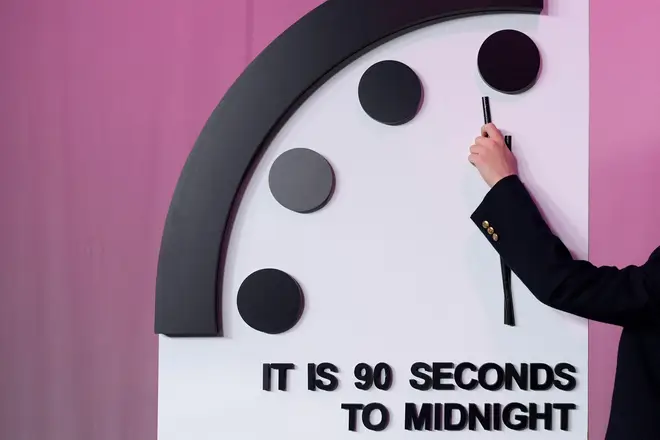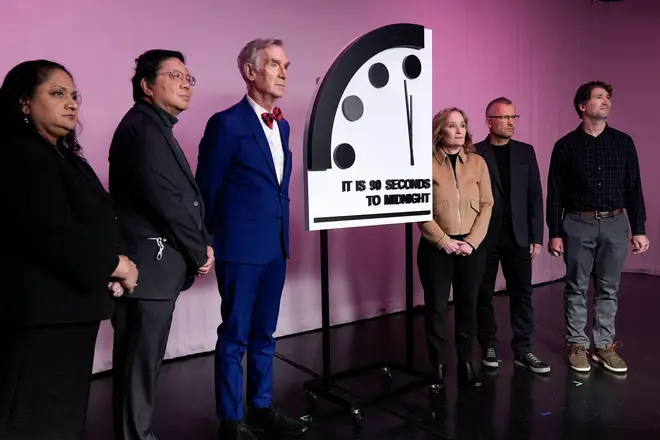
Clive Bull 1am - 4am
23 January 2024, 16:11 | Updated: 23 January 2024, 16:14

The Doomsday Clock has remained at 90 seconds to midnight for a second year in a row, according to experts who predict the likelihood of a global catastrophe.
Maintaining last year's timings means the clock's keepers at the Bulletin Of The Atomic Scientists believe the threat of global apocalypse has not decreased in the past 12 months.
The countdown is a symbolic timepiece showing how close the world is to ending, agreed on by experts at the Bulletin.
Experts have cited the stagnation to unprecedented risk, threats of war, the climate crisis and the continual rise of AI.
Rachel Bronson, president of the Bulletin, said: "Make no mistake: resetting the clock at 90 seconds to midnight is not an indication that the world is stable. Quite the opposite.
"It's urgent for governments and communities around the world to act.
"The war in Ukraine and the widespread and growing reliance on nuclear weapons increase the risk of nuclear escalation," the board said in a statement.
"China, Russia, and the United States are all spending huge sums to expand or modernise their nuclear arsenals, adding to the ever-present danger of nuclear war through mistake or miscalculation."
Experts also noted how the threat of a climate crisis, with 2023 being the hottest on record, affected millions across the globe.
The Bulletin did acknowledge that progress has been made in response to climate change but that it continues to risk the future of humanity.

In 2023, the clock was set at 90 seconds to midnight, signifying the closest global collapse had ever been.
Read more: Doomsday Clock predicts ‘unprecedented danger’ and sits just 90 seconds before midnight
Read more: At least 21 Israeli soldiers killed in ‘single deadliest attack’ on IDF since Gaza war began
The 10-second-change, from previous years, was due to the "mounting dangers of the war in Ukraine", according to the experts.
It has been 100 seconds to midnight since 2020, which had been the closest to catastrophe ever, and remained unchanged until 2023.
The reasons cited in 2020 were the "two simultaneous existential dangers of nuclear war and climate change".
Experts explained that the change occurred due to Russia’s "thinly veiled threats to use nuclear weapons", indicating a "terrible risk of conflict escalating".
They also cited other influences on the 10-second change such as the focus on developing nuclear capabilities by China, North Korea, Iran and India.
Among other factors, the bulletin cited the wars in Ukraine and Gaza as reasons for the continued setting, as well as the Earth experiencing its hottest year on record.

The countdown was established in 1947 by experts from The Bulletin Of The Atomic Scientists who were working on the Manhattan Project to design and build the first atomic bomb.
The concerned US scientists set up the Doomsday Clock to provide a simple way of demonstrating the danger to the Earth and humanity posed by nuclear war.
It is an independent non-profit organisation run by some of the world's most eminent scientists.